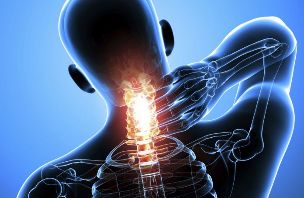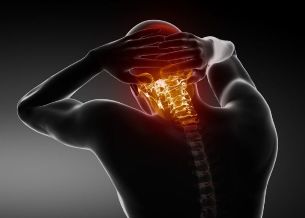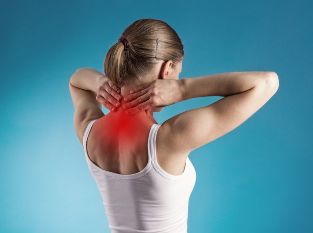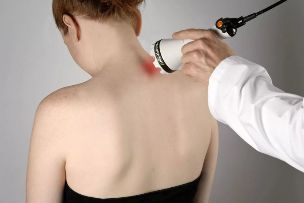The top position in the list of the most common diseases of the 21st century is always influenced by spinal diseases. The first line, in most cases, is included in the diagnosis: osteochondrosis of the cervical spine - a dangerous disease that requires mandatory intervention from an experienced physician.
The disease does not save anyone, both women and men (clinical cases of cervical osteochondrosis in men are noted more rarely than in women, but they do occur). In addition, the disease is "getting younger" every year, today the signs of cervical osteochondrosis can be seen not only in those who have passed the threshold of 40 years, but also in those who just yesterday celebrated their 25th birthday.
What is cervical spine osteochondrosis, what serves as a catalyst for the onset of the disease, why an outbreak called cervical vertebral osteochondrosis is gaining momentum, what symptoms of cervical osteochondrosis should be the reason for a visit to a medical institution, how not risky andeliminate cervical osteochondrosis forever? For those looking for an answer to this question, this article is intended. So, first things first.

General information about the disease
This disease can be characterized in one word - dystrophy. It arises against the background of changes in the chemical composition of bone and cartilage tissue and causes loss of elasticity and strength by the elements of spinal space (disc). Their structure changes, initially the outer layer (annulus fibrosus) is destroyed, then the inner layer (nucleus pulposus). Discs (fibrous cartilage) that are completely lost in nature can be deformed, overgrown (osteophytes), and lost.
Discs, change shape, size and location, pinch either nerve root (they can injure one of the 8 pairs of spinal nerves located in this zone), or blood vessels (arteries responsible for feeding the brain through this area). . . In both the first and second cases, the symptoms of cervical spine osteochondrosis clearly make them feel.
Cervical osteochondrosis is the most common diagnosis that should be voiced by a neurologist or vertebrologist to his patient. Osteochondrosis of the cervical vertebrae, as the most common reason to visit a doctor, is the result of two reasons:
- Anatomical features. The vulnerability of the upper ridge is associated with the deterioration and fragility of its connecting elements (vertebrae, discs).
- Serious load. The neck is responsible for movement and stability at the same time. This should not only provoke a "quick" weak relationship.
That is why the question is: is cervical osteochondrosis treated?
Causes of disease
Before moving on to the topic: how to cure cervical osteochondrosis, you should understand the causes of its occurrence, and try to exclude the factors that can trigger the onset of its development.

It is not impossible to provide a complete list of catalysts, but it is very possible to underline a moment that could lead to the fact that the signs of cervical spine osteochondrosis will not keep you waiting.
The main cause of osteochondrosis:
- unhealthy diet (snacks, fast food, lack of a complete regimen and balanced diet - this is a direct path to thinning of cartilage and bone tissue, which does not receive enough of the supporting elements and vitaminshis health);
- unstable lifestyle (other possible options are lack of physical activity, this leads to stagnation of ridge elements and lack of oxygen supply to tissues);
- genetic predisposition (in this case, you can ask your parents what to do with cervical osteochondrosis, they will tell you how to get rid of cervical spine osteochondrosis and how the disease manifests itself);
- postponement of injury (the need to obtain information on what cervical osteochondrosis can also occur when the development of the disease is due to the transfer or rupture of the intervertebral disc due to injury);
- Diseases of the vascular system, infectious or inflammatory (in the first case, information on the topic: how to treat osteochondrosis of the cervical spine occurs due to lack of nutrients that support cartilage tissue, in the second, due to errors of autoimmune and necrotic processes that damage the joints, spine and spinal cord).
Hormone background instability caused by overweight or stressful conditions, as well as incorrect posture (scoliosis) are two more reasons to get used to the substance in this case: is it possible to cure cervical spine osteochondrosis.
Signs of disease
The cause of cervical osteochondrosis has been determined. Work on bugs completed. Now the most important thing is not to miss the symptoms of neck osteochondrosis (if the risk factor is eliminated too long and the disease has already started to spread). The sooner they are diagnosed, the easier the recovery path will be.
For convenience, it is better to divide all the signs of the disease into two groups. This can be done based on the main criteria: origin.
The first group is a phenomenon, the appearance of which is provoked by the constriction of blood arteries (due to vascular changes). Compressed ducts to transport blood, saturated with oxygen and nutrients, can not fully cope with its task, parts of the brain do not get enough nutrition and lose some of its functional capabilities.

The second group is symptoms, manifestations associated with pinched nerve endings (due to neurological changes). In most cases, the vagus nerve (coordinating the state of the esophagus, pharynx and larynx), the frenic nerve (responsible for the heartbeat and regulation of the respiratory process), as well as the nerve endings that animate other organs from internal structures, undergo deformation, destruction and mixing of discs. and spine.
More detailed information on how not to miss the first "bell" of the disease in the event of osteochondrosis of the cervical spine and use the help that can be given by the doctor present exactly on the table below.
Symptoms of Disease
| Origin | Manifestation |
|---|---|
| Changes in the state of the vascular system | dizziness, fainting lack of coordination memory impairment decreased concentration loss of visual and auditory acuity blackheads ringing, tinitus apathy, depression panic attacks nausea, vomiting |
| Neurological changes | neck pain, pelvis, occiput (persistent, paroxysmal) pain radiating to arms, shoulders, interscapular area, chest shortness of breath, shortness of breath, chokingchest tightness, angina lump in the throat, difficulty swallowing, dry, itchy throat |
Important! If at least one of the symptoms from the table above appears, it is necessary to immediately undergo an examination and begin treatment of osteochondrosis of the cervical spine. Other behaviors can lead to more serious consequences, which cannot be cured without surgical intervention!
Complex therapy
How to treat cervical osteochondrosis, this is how the pain question sounds. The answer is not clear: with the help of complex therapy prescribed by a qualified doctor.
Fighting this disease requires discipline from patients and adherence to expert recommendations. In most cases, osteochondrosis of the cervical spine can be cured with the help of several traditional and alternative medical methods at once (only a doctor can coordinate a patient who can determine a specific program aimed at the effective treatment of cervical osteochondrosis).
Usually he selects a technique from the following list:
exercise therapy

Physiotherapy is an excellent health therapy tool that allows you to cure cervical spine osteochondrosis and improve your overall health. It solves several problems at once:
- normalizes blood circulation;
- speeds up metabolic processes;
- relieves pain syndrome;
- strengthens muscle corsets;
- unload the spine;
- is charged with cheerfulness and optimism.
There are a number of rules that explain how to get rid of cervical osteochondrosis by charging properly, without aggravating the condition. They read:
- training set should be chosen by a specialist who has an idea of the general clinical picture (age, chronic disease and patient characteristics);
- any discomfort during class must be a reason to refuse gymnastics (at least before consulting a doctor), as well as a period of exacerbation of the disease;
- sudden overactive movements are completely excluded, you need to do it carefully without haste;
- exercises should be done periodically (exercise from time to time will not solve the problem).
Massage (manual therapy)
Is it possible to cure cervical osteochondrosis in other ways? Enough. All that is needed to activate the regenerating properties of the body, relieve cramps, release nerve roots, pinched arteries and reduce symptoms are skilled hands from an excellent masseur or manual.
The general guidelines are:
- procedures must be performed by a specialist with appropriate education and experience;
- exposure time to problem areas - no more than 35 minutes;
- duration of one course (without interruption) - no more than 12 sessions;
- any changes in the patient's condition must be known by the doctor treating him.
Important! Perform a massage for osteochondrosis or visit the therapist's office - manual with contraindications is strictly prohibited!
Physiotherapy

This clinical field of medicine has found its own answer to the question: how to get rid of osteochondrosis? He suggests using healing properties from various phenomena, including:
- high frequency sound waves (ultrasound);
- mechanical vibration (vibration);
- electric current of various intensities (electrophoresis, UHF);
- ultraviolet radiation (quartz);
- other physiotherapy techniques.
This procedure contributes to the onset of positive dynamics. They normalize blood flow, relieve inflammation, relieve pain, simplify the process of administering medication and shorten the time required for its absorption by tissues.
Medicine
How to deal with cervical osteochondrosis, which continues to develop, despite all efforts to stop this process? Only with the help of drugs designed to eliminate the cause of this phenomenon.
All drugs used in an integrated approach are divided into several groups, depending on the action taken. The table below will help clarify the situation.
Medicine
| Groups | Action | |
|---|---|---|
| Analgesics, NSAIDs | pain relief, elimination of inflammatory processes |
|
| Relax muscle |
relieves muscle cramps | |
| Chondroprotectors | activation of tissue regeneration function, restoration of disc structure, spine, joints |
|
| Vitamins and Minerals |
stimulation of metabolic processes, activation of the body's protective properties, better microcirculation, strengthen the immune system, |
Experts decide for themselves how to treat neck osteochondrosis. He can complete therapy with drugs that belong to the group of vasodilators (to relieve vasodilators), antidepressants (to relieve nervous tension) and others, depending on the general clinical picture of the disease.
In short, we can give a clear answer to the key question: is osteochondrosis treated? Yes, but only under the close supervision of a competent doctor and with the wishes of the patient himself!





































